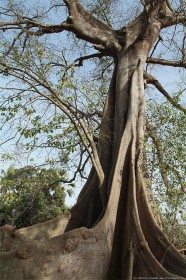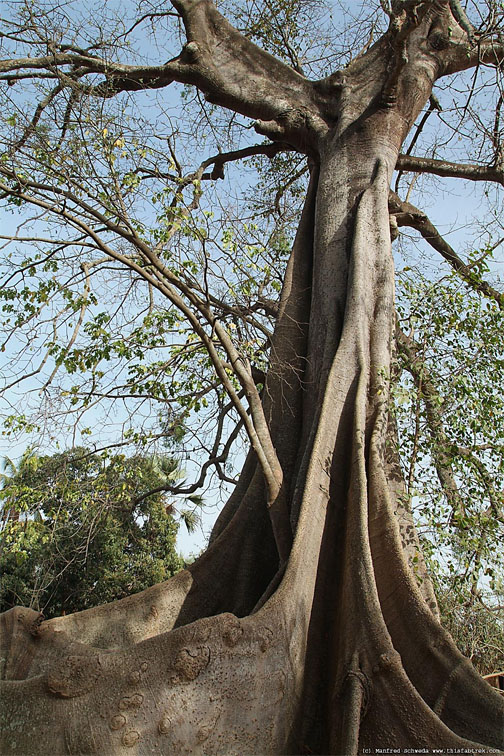Among the more substantial features in the glossy magazine Ins and Outs of Trinidad and Tobago is a small entry on ‘Trini Folklore, Folktales and Myths . . . Our rich storytelling tradition’ by Nasser Khan. It carries brief sketches of a few supernatural characters who make up the dramatis personae of Trinidadian mythology, folklore and folk-tales often presented in the Caribbean storytelling tradition.
 The magazine is published by the Caribbean Tourism Publications Ltd in Port of Spain and edited by Sandra Baksh in a project coordinated by Patricia Lewis and Marie Gurley. It is very impressive and informative in the context of these types of publications, most of which are designed to give quick, attractively packaged, easy reference points and information mainly for visitors in search of instant guides, things to do and light entertainment rather than intellectual depth.
The magazine is published by the Caribbean Tourism Publications Ltd in Port of Spain and edited by Sandra Baksh in a project coordinated by Patricia Lewis and Marie Gurley. It is very impressive and informative in the context of these types of publications, most of which are designed to give quick, attractively packaged, easy reference points and information mainly for visitors in search of instant guides, things to do and light entertainment rather than intellectual depth.
In keeping with that, the folklore sketches are accordingly spare and light-hearted pinpoints of popular ‘jumbies,’ ‘superstitions,’ ‘scary creatures’ of make-believe. Indeed, that is how they are often treated in the popular culture of any Caribbean country of which they are a part, but the subject goes far beyond that surface approach and is only deceptively a topic of mild horror and amusement. Khan presents eight entries that he calls “the popular folklore characters (jumbies as they are generally called) . . . of Trinidad.” But these are only a few; there are many more, and far from being simply amusing ‘jumbies’ they arise from deep cultural and historic traditions, from the roots of history and myth and in some ways represent the people who created them.

Silk cotton trees, for example, appear among the entries. According to Khan they are “regarded with a kind of awed reverence and fear. To cut one down is to free the spirits that live in them, making them free to roam the earth.” He is right. This tree is at the core of mythology, legend and spirituality in the Caribbean, with a significance that cannot be done justice to here in my brief reference. I will only provide examples to indicate the depth of cultural and spiritual tradition attached to this tree.
In Guyana there is a spot still marked in the middle of the East Coast Highway at Mahaica/Mahaicony where a huge tree once stood. It defied all attempts to cut it down and there are legends of engineers who attempted to fell it in order to build the road and were struck dead. Eventually the road was built in two lanes around it. Some years ago it collapsed from old age as no one else dared to defy the spirits who lived in and protected it. It was the source of spirit possession, the giver of power to devotees, and of course, the subject of myth. It inspired artist and writer Barrington Braithwaite to create stories anchored in history, Guyana’s Dutch and African heritage and the theological mysteries of a haunting colonial past.
Far from being dismissed as belief in superstition, the importance of the silk cotton tree is recorded in the official published history of African slavery in the West Indies. The historians took very seriously the close associations the Africans had with it and the role it played in their spirituality, resistance to slavery and social life. This existed across the Caribbean as far as Jamaica, and not just in Trinidad and Guyana. In addition, this tree also appears in Amerindian mythology as well as East Indian traditions in Guyana.
Sometimes the line is very vague where history ends and legend or myth begins. One of the actual characters described by Khan as “the African witch of Golden Lane, who, on a stormy night, was blown from her home in Africa across the sea to Tobago,” is Gang Gang Sari (Khan calls her Gang Gang Sara). There is a marked grave in the village of Golden Lane in Tobago where this matriarch is buried, so she actually existed (?). My information is that she deliberately flew across the Atlantic to visit her relatives who had been taken away to Tobago in slavery. Africans had the power of flight, but crossing the ocean in slavery and being exposed to the salt of the sea robbed them of that power. So Sari was unable to fly back home after her visit and remained in the island where she lived to a very old age as a revered matriarch.
This loss of power because of the trans-Atlantic voyage is known across the region as a condition of the Africans following the infamous Middle Passage, but there is a significant similarity in the condition of the Indians who crossed the Kala Paani or ‘dark waters’ in indentureship. Among the Africans in the New World, to regain this power involves rare spiritual knowledge and ritual and there are other stories of a few who achieved it, went to the edge of the ocean and returned ‘home.’ This is used by American novelist and Nobel Laureate Toni Morrison in Song of Solomon and is treated as myth arising from a socio-historical cultural condition among unprivileged blacks in the West Indies by Maureen Warner-Lewis in Guinea’s Other Suns. It is therefore a part of a complex matrix of tradition, culture and belief among people living in exiled and trying conditions in the Caribbean, and is also linked to certain attitudes to the eating of salt. Novelist Earl Lovelace treats it all in the Commonwealth Prize-winning novel Salt.
Khan describes the Soucouyant as “an old woman who has sold her soul to the devil. Each night she sheds her skin and takes the form of a ball of fire. She flies about going to houses to suck the blood of sleeping people as well as animals.” This is the Trinidadian version of the Ol Higue as known in Guyana. An important difference is that the ol higue specialises in sucking children or babies, although others are not entirely immune. In villages she lives as an ordinary mortal among everyone else and since her real identity is secret there is often much speculation among the villagers, and some people are suspected, sometimes with dire consequences. Recently in contemporary Guyana, a strange woman was murdered, beaten to death by villagers on the East Coast with the explanation that they thought she was an ol higue.
This has also to be attributed to a condition of people in situations of poverty or poor health conditions where infant mortality is high. Theories evolved to explain frequent deaths of causes unknown to the villagers. Similar conditions have been used to explain the Abiku myths in Yoruba West Africa, in which a baby who died in infancy or at birth may return as a spirit to haunt its mother. This may happen because the infant died before being named and had therefore not yet joined the ranks of humans. An approximate situation exists in Trinidad in the case of a bolom or a douen.
Douens have feet which are turned backwards, and according to Khan they search for “living children who are not yet christened to take with them” and “wear large straw hats to hide their faces.” This may be so because they do not want to be recognized since they may well be children who had been born before or who would be recognized as a known child who recently died. They use footprints turned backwards to deceive and lure children away, and target those not yet christened because of their own condition in the abiku myth.
Papa Bois, also listed in Khan’s sketches, is the old “father of the woods,” a man with goat feet, and protector of the forest. “He will not allow any trees or animals in his forests to be hunted or destroyed. Death befalls anyone who violates the forest in his care.” Ironically, long before conservation became fashionable the mythology in the oral tradition was concerned with protecting the forests. Here is an example of the folk contribution to the fight against global warming or climate change, and strategies used by the folk to preserve wild life and the rainforests before the creation of Low Carbon Development Strategies.

